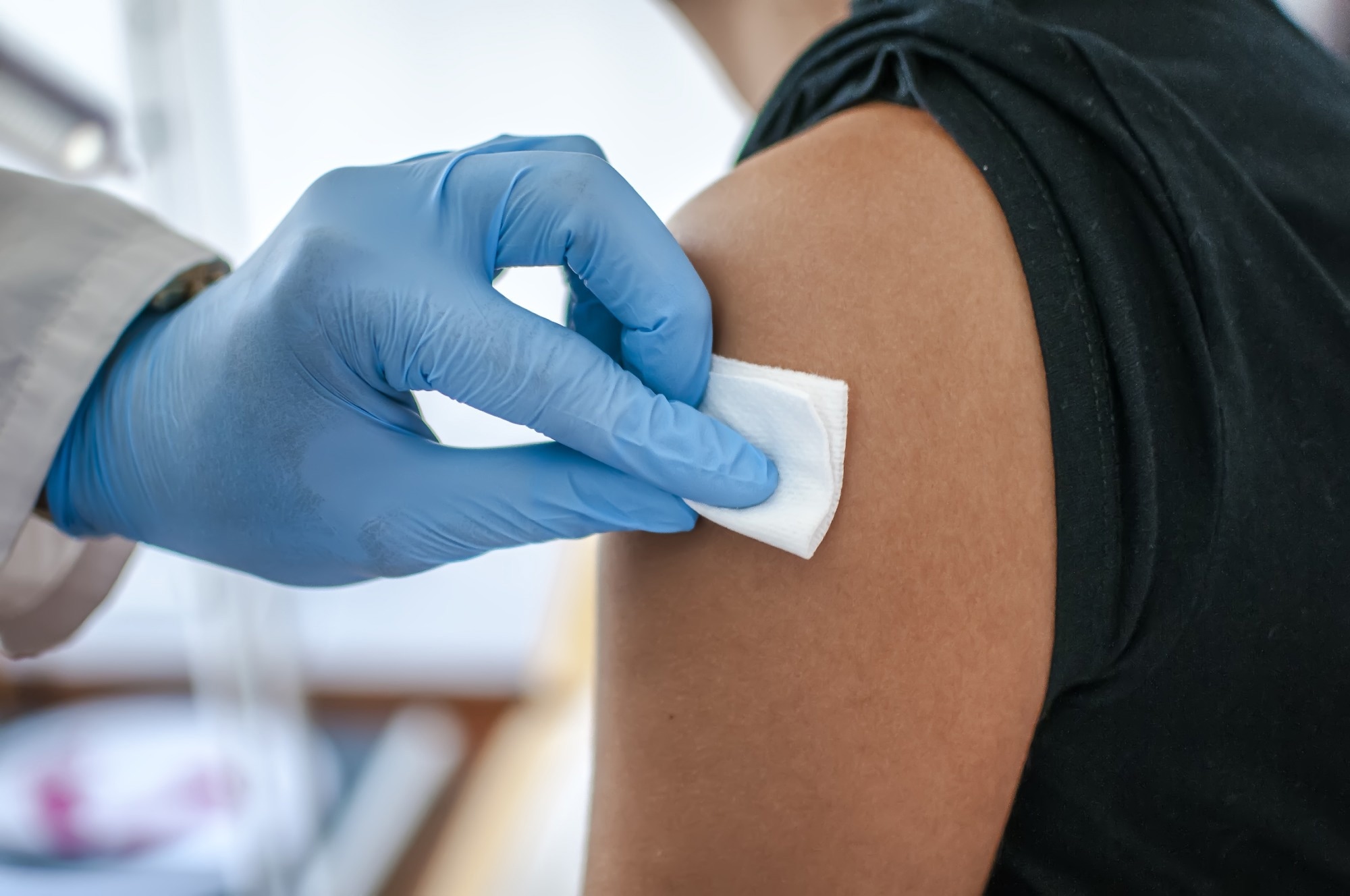In a recent study published in The New England Journal of Medicine, researchers evaluated the safety and non-inferiority of the pentavalent meningococcal NmCV-5 vaccine compared to the World Health Organization (WHO)-prequalified MenACWY-D quadrivalent meningococcal vaccine.
 Study: Meningococcal ACWYX Conjugate Vaccine in 2-to-29-Year-Olds in Mali and Gambia. Image Credit: xelaway/Shutterstock.com
Study: Meningococcal ACWYX Conjugate Vaccine in 2-to-29-Year-Olds in Mali and Gambia. Image Credit: xelaway/Shutterstock.com
Background
The World Health Assembly approved the global plan for the ‘Defeating Meningitis by 2030’ initiative in 2020 to eradicate meningococcal infections and lower the incidence and mortality rates of diseases that vaccines can prevent by 50.0% and 70.0%, respectively.
Most meningitis cases and deaths have been documented in the African belt, extending between Senegal and Gambia (west) and Ethiopia (east).
Meningococcal A serogroup infections have been eliminated; however, other serotypes continue to cause diseases, warranting the development of potent, cost-effective, and multivalent-type meningococcal vaccines.
Moreover, cost and supply constraints limit the usage of the existing meningococcal quadrivalent vaccines in Africa, and currently, there are no authorized vaccines against the meningococcal X serogroup.
NmCV-5 is a pentavalent vaccine targeted at meningococcal serotypes A, C, W, Y, and X, formulated by the Program for Appropriate Technology in Health (PATH) and the Serum Institute of India (SII).
The vaccine has demonstrated efficacy against meningitis in Phase I and II trials, warranting further research to accelerate clinical translation and reduce the global burden of bacterial meningitis.
About the study
In the present study, researchers presented Phase III trial results of the NmCV-5 vaccine concerning vaccine immunogenicity and safety compared to the MenACWY-D vaccine in Gambia and Mali.
The randomized, double-blinded, active-controlled non-inferiority trial included healthy individuals aged two to 29.0 years in Gambia and Mali who were randomly allocated to receive single intramuscular NmCV-5 (n=400) or MenACWY-D (n=200) vaccines.
Blood samples were obtained from the participants at baseline and week four following vaccination to determine the serogroup-targeted serum bactericidal antibody (SBA) titers.
The team assessed immunological non-inferiority to the WHO-prequalified MenACWY-D vaccine concerning the serogroup-specific SBA seroresponse and the geometric mean titers (GMTs) at week four following NmCV-5 vaccination.
They compared immune responses against serogroup X by NmCV-5 vaccinees to the least response by MenACWY-D vaccinees. In addition, data on solicited and unsolicited adverse events (AEs) were obtained to assess vaccine safety.
The participants were allotted to groups based on their ages into the two to 10.0-year, 11.0 to 17.0-year, and 18.0-to-29.0-year groups.
Results
Among the participants, 49% were male, all resided in Africa, and 43% were of Mandinka-Malinke ethnicity. The sample population was representative of NmCV-5’s target population.
Among NmCV-5 vaccines, the proportion of individuals with seroresponse ranged between 71.0% for the A serogroup and 99.0% for the W serogroup, and the proportion of individuals with the W serogroup responses was 97.0%.
The difference in seroresponses between the groups ranged between 1.20 percentage points (W serogroup) and 21 percentage points (A serogroup).
The geometric mean titer ratios for meningococcal serogroups ranged between two for the A serogroup and three for the C serogroup.
The GMTs and seroresponse for the X serogroup induced by NmCV-5 indicated that the vaccine was non-inferior to MenACWY-D.
Incidence rates of systemic AEs were comparable among the groups; 11% among NmCV-5 vaccinees and 9.0% among MenACWY-D vaccinees. The serogroup-targeted SBA GMTs after four weeks of NmCV-5 vaccination ranged between 5,587 (C serogroup) and 31,290 (X serogroup).
GMTs four weeks after MenACWY-D vaccination ranged between 1,855 for the C serogroup and 12,295 for the W serogroup. The adjusted geometric mean titer ratio obtained after comparing the GMTs for the X serogroup among NmCV-5 vaccinees to those for the C serogroup among MenACWY vaccinees was 10.
NmCV-5 was non-inferior to MenACWY-D based on GMT and seroresponse for all age groups. Individuals with baseline and post-vaccination serogroup-targeted serum bactericidal antibody titers of ≥8.0 and ≥128.0 showed higher geometric mean factor increases among NmCV-5 vaccinees, irrespective of serotype and age.
In total, 312 NmCV-5 vaccinees (26%) and 115 MenACWY-D vaccinees (19%) reported ≥1.0 solicited AE at the site of injection, of which pain was the most common.
Solicited systemic AEs were reported by 133 (11%) NmCV-5 vaccinees and 55 (9.0%) MenACWY-D vaccinees; however, all the events were mild-moderate in severity and resolved with simple analgesia.
Mild-moderate unsolicited AEs were reported by 189 NmCV-5 vaccinees (16%) and 99 (17%) MenACWY-D vaccinees; the most documented were upper respiratory tract infections, pharyngitis, and malaria.
However, none of them were related to vaccination. Three serious AEs occurred in both groups; however, none were deemed related to the vaccines.
Conclusion
Overall, the study findings showed that for all serogroups common with MenACWY-D, NmCV-5 induced non-inferior immunological responses compared to MenACWY-D.
In addition, the NmCV-5 vaccine elicited immunological responses against serogroup X and was considered safe.